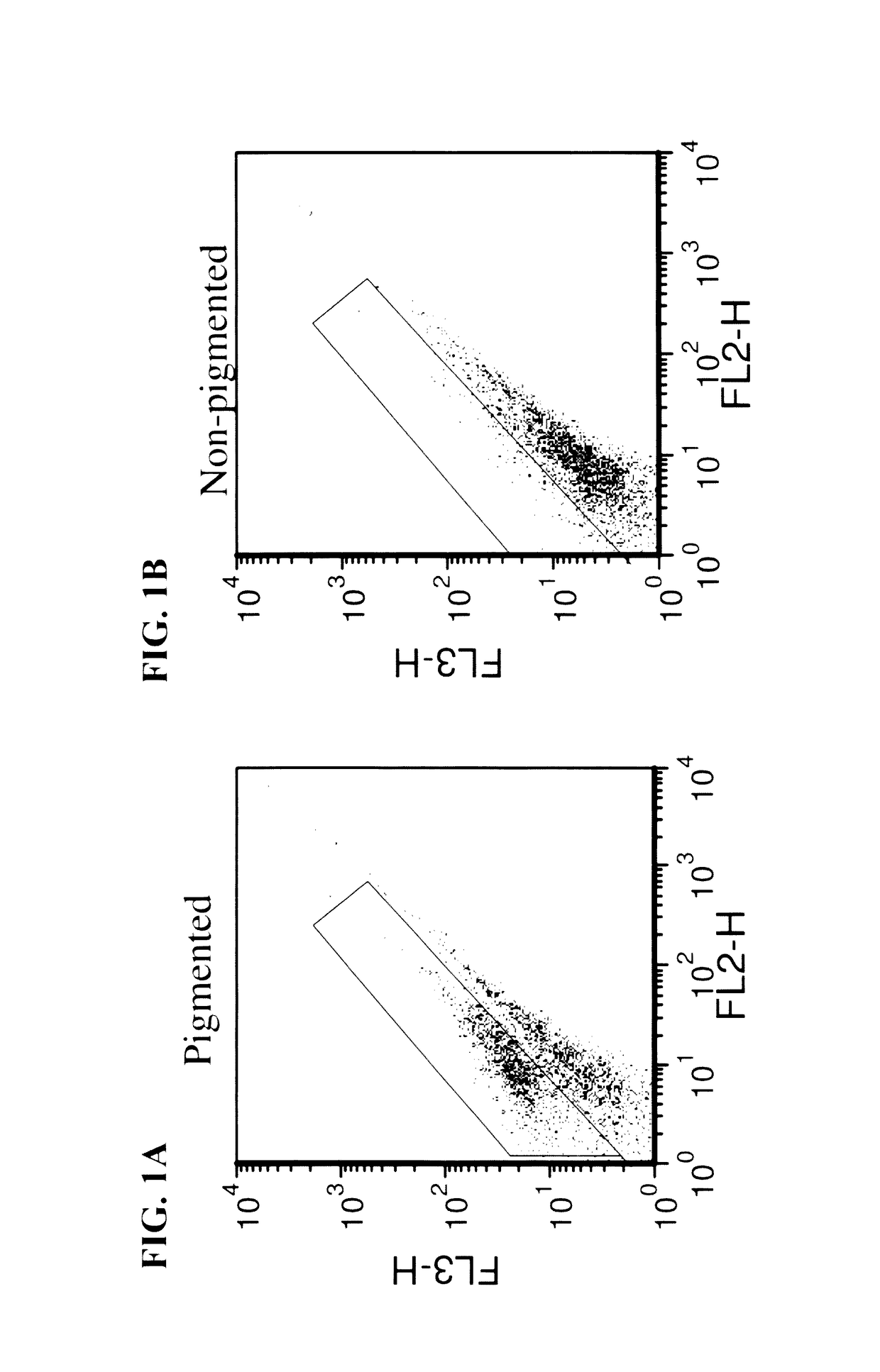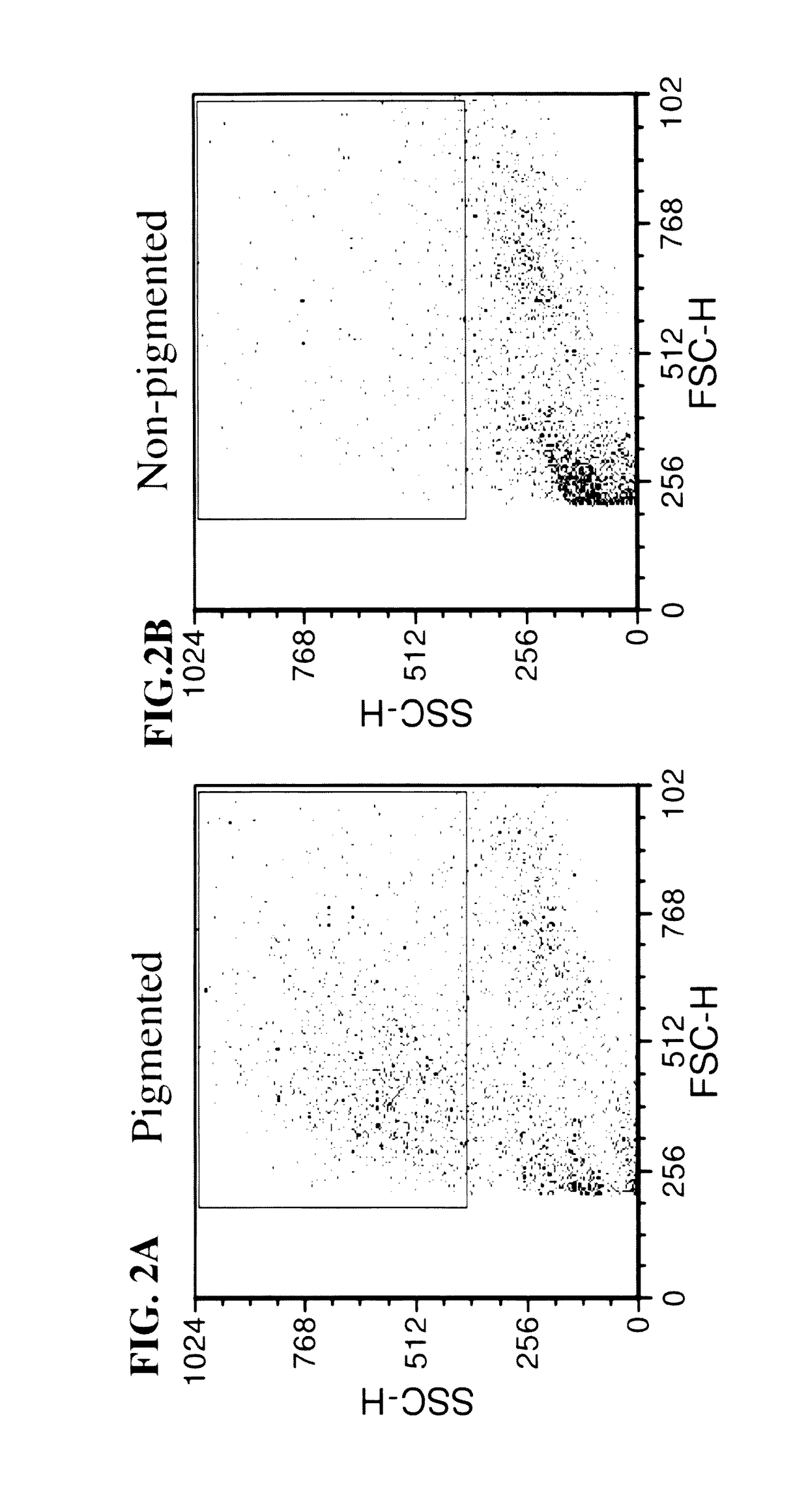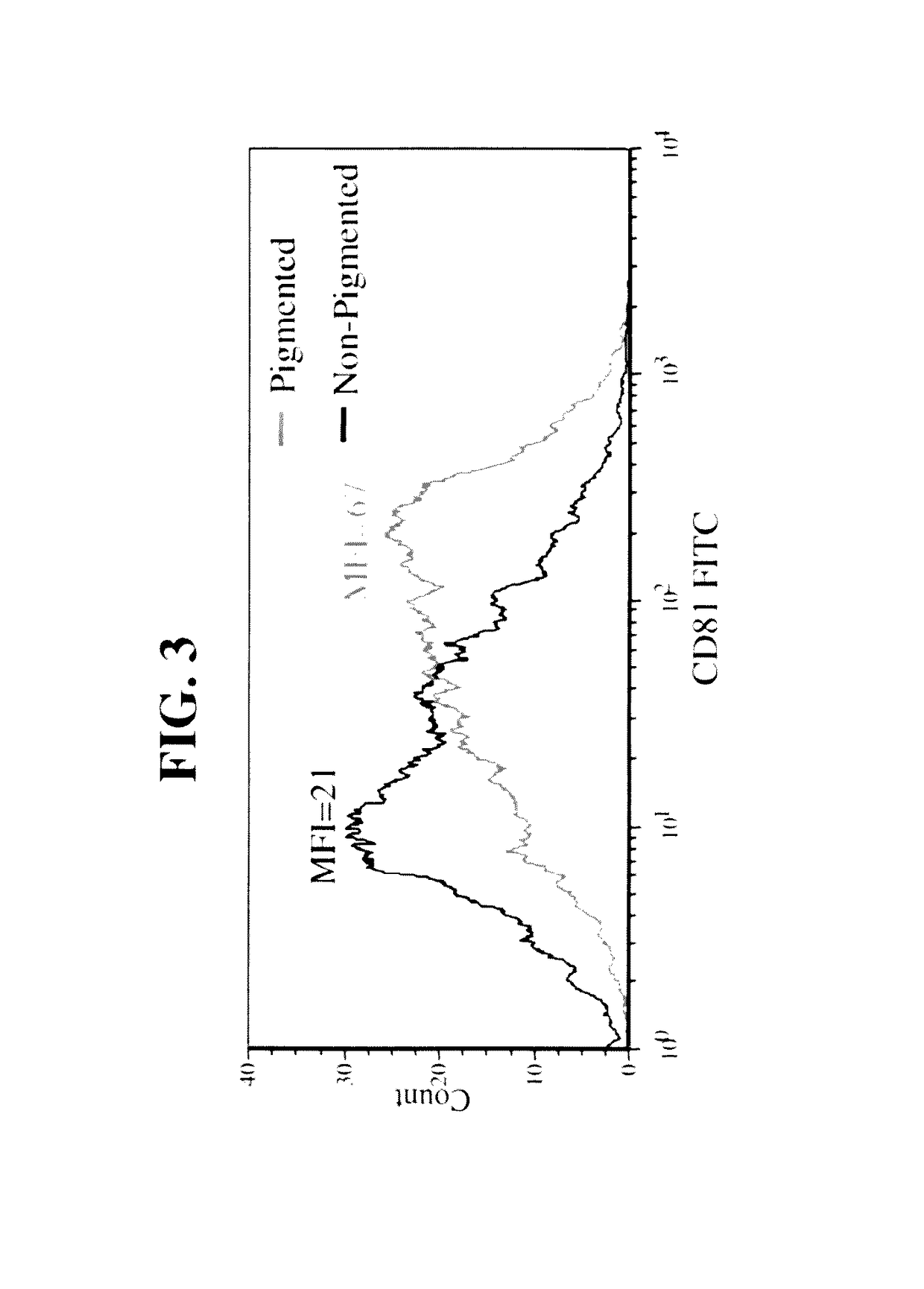Methods of selecting retinal pigmented epithelial cells
a pigmented epithelial cell and retinal pigment technology, applied in the field of methods of selecting retinal pigmented epithelial cells, can solve the problems of limited widespread use of these donor sources, high labor intensity, and limited application of these donor sources
- Summary
- Abstract
- Description
- Claims
- Application Information
AI Technical Summary
Benefits of technology
Problems solved by technology
Method used
Image
Examples
example 1
FACS-Sorting Separation of RPE Pigmented Cells from Non Pigmented Cells
[0155]Materials and Methods
[0156]hESC Maintenance:
[0157]hESCs were maintained on human foreskin fibroblasts treated for 2.5 hours with 10 μg / ml mitomycin-C (Sigma, St. Louis, Mo.), and plated in gelatin-coated 9.5 cm2 well plates (Nunc, Glostrup, Denmark; 3×105 feeders / well). HES-1 cells were routinely cultured in 85% knockout DMEM medium supplemented with 14% knockout serum replacement, 1 mM L-glutamine, 1% nonessential amino acids (10 mM of each amino acid), 50 U / ml penicillin, 50 μg / ml streptomycin, (all from Gibco, Carlsbad, Calif.) and 4 ng / ml basic fibroblast growth factor (bFGF, Cytolab, Rehovot, Israel). The medium was changed every day. The cells were passaged weekly as small clusters following digestion with Collagenase type IV (1 mg / ml, Gibco) for 1 hour.
[0158]Differentiation of hESCs to RPE-Enriched Spheres:
[0159]HES-1 cells were differentiated to spheres, composed of RPE cells and other cell types as...
PUM
| Property | Measurement | Unit |
|---|---|---|
| voltage | aaaaa | aaaaa |
| volumes | aaaaa | aaaaa |
| time | aaaaa | aaaaa |
Abstract
Description
Claims
Application Information
 Login to View More
Login to View More - R&D
- Intellectual Property
- Life Sciences
- Materials
- Tech Scout
- Unparalleled Data Quality
- Higher Quality Content
- 60% Fewer Hallucinations
Browse by: Latest US Patents, China's latest patents, Technical Efficacy Thesaurus, Application Domain, Technology Topic, Popular Technical Reports.
© 2025 PatSnap. All rights reserved.Legal|Privacy policy|Modern Slavery Act Transparency Statement|Sitemap|About US| Contact US: help@patsnap.com



